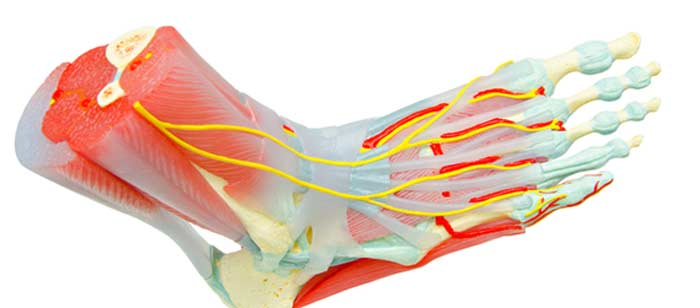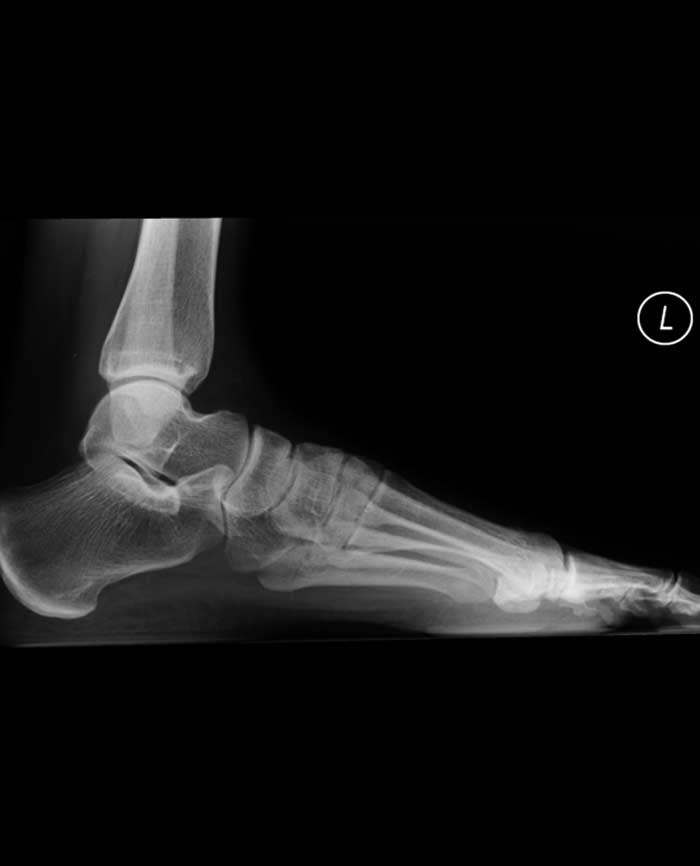
Tarsal coalition describes an abnormal connection between the tarsal bones that are located in the back of the foot.
The connection might include bone, fibrous tissue, or cartilage. When this abnormal connection is present, it may affect the patient’s mobility.
Causes
This condition is typically one that people are born with. The abnormalities occur during fetal development. However, in some cases, tarsal coalition is the result of arthritis, infection, or an injury affecting the area.
Symptoms
The symptoms often do not occur until bone maturation starts. The average onset is ages nine to 16. In some cases, people do not notice a problem until later in life. The following are possible symptoms of this condition:
- Pain when standing or walking that ranges from mild to severe
- Muscle spasms affecting the legs that can cause the foot to point outward when the patient is walking
- Walking with a limp
- Fatigued or tired legs
- Flatfoot (may affect both feet or just one)
- Stiffness affecting the ankle or the foot


Diagnosis
Until the bones start to mature in children, it can be hard to diagnose this condition. In some cases, patients are adults before they start to experience symptoms that prompt them to visit a doctor. The development and duration of symptoms is often what the doctor asks about first. From here, they will examine the ankle and foot to evaluate for mobility and pain. The coalition location and severity will determine the findings.
The doctor may order X-rays to look at the bones that are believed to be affected. For more detailed pictures of the area, other imaging studies might be ordered.
Treatment
There are several treatment options that may help to alleviate the symptoms. Oral medications are often considered first. Since inflammation and pain can occur, non-steroidal anti-inflammatory drugs may be considered, such as naproxen or ibuprofen.
Physical therapy might be helpful for some patients. This may include range-of-motion exercises, massage and ultrasound therapy depending on the symptom severity. The physical therapist might also recommend certain orthotic devices. These can help to alleviate pain and limit the joint’s motion. These devices can also help to remove some of the patient’s weight from the affected joint so that there is not as much stress on it.
Resting the affected foot can be beneficial for some patients. Doctors might recommend short-term immobilization for this purpose. This involves putting a cast boot or cast onto the foot. The patient then uses crutches to alleviate pressure on the foot.
Injections may be considered in some cases. This might include injecting steroids or a local anesthetic into the affected area.
Surgery might be considered if other treatments methods do not take care of the patient’s symptoms. The technique used will depend on the patient’s condition, activity level, age and if there are any arthritis changes present.
